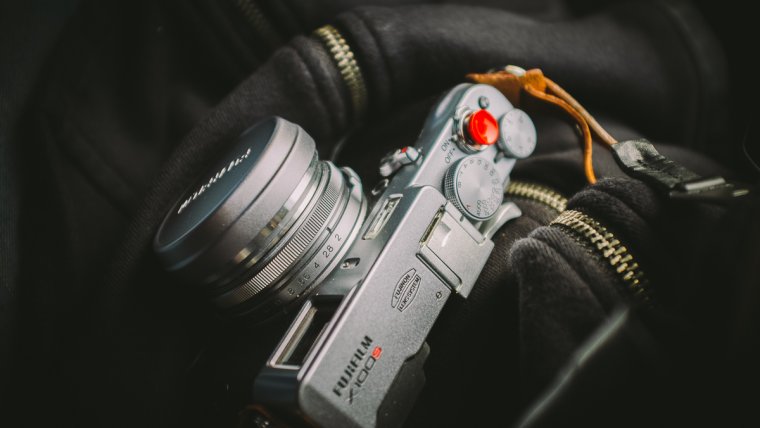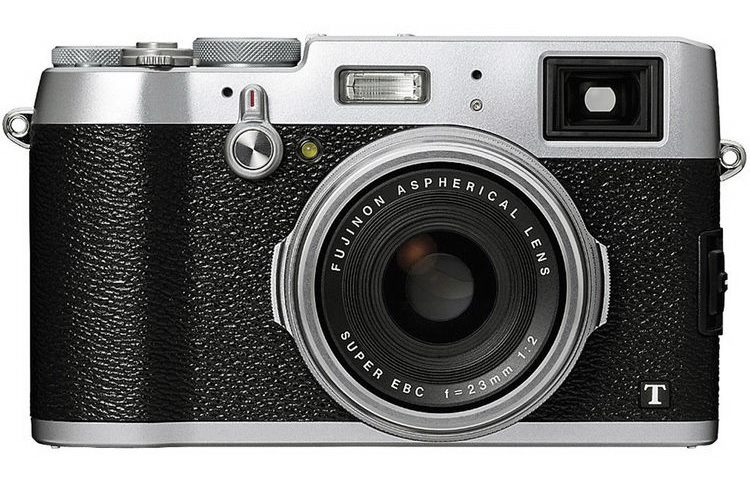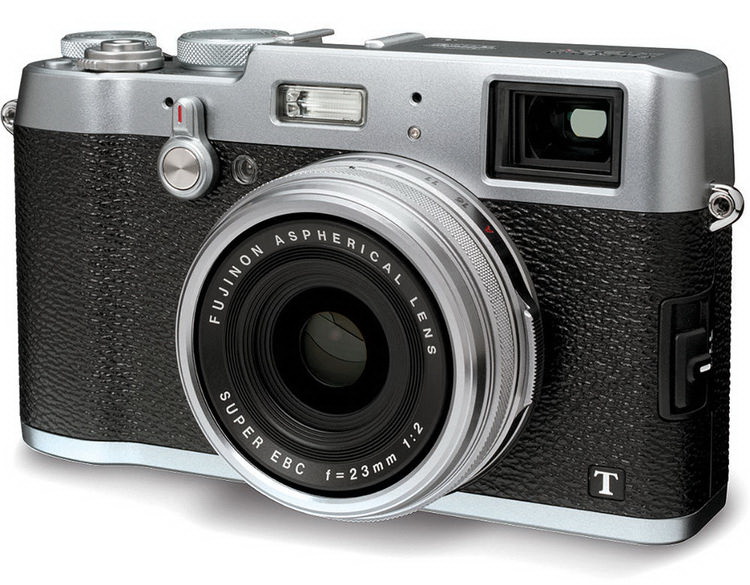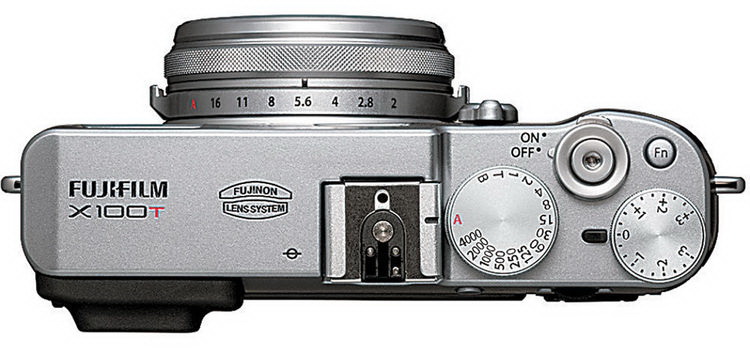
has built quite a reputation today for being capable to produce a quality camera no matter what type it is or how much it costs. More importantly, they learned how to do it with style. All of this made them one of the most recognizable brands on the camera market. Today we have a unique camera that really serves as a showcase of company’s ability to do something special and different. If there is one word with which we could describe the Fujifilm X100T, it’s just that, special. This camera tries to blend the best of two different eras together; the looks and the manual controls from the rangefinders of old and the modern features and specifications that fit a high-end product today. It has a unique place on the market, sitting somewhere between the compact camera and the mirrorless interchangeable lens camera. It’s simple in a way that it comes with a fixed lens and forces you to spend more time thinking about your composition rather than wasting time on choosing the right lens, but it also has a few professional touches and gives you a lot of control with everything it has to offer. Let’s see how well it holds in today’s fierce market and who is this camera really made for.
Table of Contents
If there is one thing that most of you will notice about this camera right from the start, it’s the design. We are aware this is a very subjective and opinionated thing, but we think we can safely speak on behalf of most people when we say that the X100T looks simply stunning. There are two variants available (black and silver), but we’ll focus on the silver one since it looks more iconic in our opinion. The top of the camera is made out of magnesium alloy while the rest is made out of aluminum to reduce the overall weight but still retain that premium feel. The faux leather that surrounds the camera is made out of synthetic resin and all the dials are also made out of metal and with great precision. All of this makes the X100T a pleasure to use and makes you want to shoot with it the moment you take it into your hands. It feels that good as in the case of Sony A7S which is a pleasure to work with.

But that’s not the only thing that gives out such a positive impression, it’s also the available manual controls. Not only that, but you can also customize up to seven buttons. That’s a level of customization that wouldn’t feel out of place even on a lot more professional cameras. Let’s round up those controls and see what’s available. On the top of the camera you’ll notice only for things: shutter speed and exposure compensation dials, shutter button that doubles as on/off switch and the customizable Fn button. There is no popup flash on the X100T as it’s found on the front of the body which is a logical place for this type of camera. On the front of the camera, you will only find the two-way lever which and the button inside of it which are used to switch between different viewfinder modes. Flicking the switch to the left activates the viewfinder tab when you’re in optical viewfinder mode. This gives you a little window in the bottom right of the viewfinder which works together with focus confirmation to help you focus more easily. Pushing the lever to the right switches to the EVF. The EVF has the ability to change its lighting based on the light conditions you are shooting in. Taking a look at the back of the camera reveals the majority of manual controls. On the left, you’ll find the View mode, Playback, Trashcan and Wi-Fi/Fn buttons. On the upper right, you’ll find a Drive button and the rear control dial. Just right of the screen, you’ll find the AEL/AFL, Q and Disp/Back buttons as well as the main navigation controller with the Menu/Ok button inside of it. As we’ve already mentioned, you can customize a healthy number of buttons on the X100T. Those that can be customized can be programmed to change the ISO, turn on the integrated ND filter, activate macro mode or one of the Film simulations, activate the self-timer, change AF mode and so on.

We are really pleased that Fuji gave us this much options to help us shape the camera’s controls to our own needs and we believe that anyone using this camera will be thrilled with this. While we’re on the point of customization, you can also program the navigation controller to be used for AF point selection and the cool thing about this is that you don’t have to press any menu or button to activate this functionality as it will work by directly pressing one of the four navigation buttons. We should also mention the Q menu which is activated through the Q button. This allows you to fit 16 different slots with 30 different options like ISO, WB, Dynamic range, Noise reduction and so on. Those 16 slots are immediately visible when you press the Q button, so it’s quite an easy and uncluttered way to access something quickly. The X100T also has a sophisticated electronic shutter mode and you can also assign one of the slots in the Q menu to that functionality. The electronic shutter mode allows you to shoot with large aperture lenses in direct sunlight more easier by giving you a lot faster shutter speeds, but you also can’t use flash in this mode and the rolling shutter effect becomes more noticeable. In mechanical shutter mode the flash unit on the X100T can sync its speed to any shutter speed you are using at that moment and it increases the narrower the aperture. For example, it means that the sync speed maxes out at 1/1000 second at f2 and it can reach 1/4000 second at f8. If you don’t want to be bothered in deciding when to use the electronic and when to use the mechanical shutter there is also a ES+MS mode that decides that for you based on your shooting conditions. Other than giving you the ability to customize a lot of things, the user interface itself is also well made and the layout of all the options and settings never feels out of place or too cluttered. It’s a balanced menu system that we really have no complaints about. It also looks sharp and vivid on that 1,040,000 dot high-resolution display.
Like always, we will end this section of the review by mentioning the Wi-Fi capabilities of a camera. As you would expect, most of the work is done through the Fujifilm Camera Remote App, which you can easily download through the application store on your iOS or Android device. With it, you can immediately backup your photos, embed them with the GPS location or remotely control the X100T. Fuji really put their time and effort into this app as you’ll gain an incredible amount of control over your camera with it. Aside from gaining Touch AF capabilities, you can change the ISO, shutter speed, aperture, white balance and so on. The X100T can not only communicate with your phone or tablet, but also with your PC so you can backup them that way as well. When we round up all are impressions so far, we can say that we are really impressed. We couldn’t find any flaw with the Fujifilm X100T in this regard and it’s obvious that the company has held to their highest standards when creating this camera. Let’s see if it holds up that well in regards to its performance.
Like we’ve mentioned earlier, the X100T comes with the same hybrid AF system as the one on it’s predecessor, the X100S. While the aforementioned system is very fast and accurate in almost all but the most action oriented situations, it’s not where the improvements on the X100T lie. This camera is all about the experience of focusing manually and that’s the area on which most of its focusing features are oriented on. Manual focus is initiated the traditional way, just by switching to that mode and using the manual focus ring on the lens. The focusing mechanism is electronically coupled to the lens and that translates to more smooth focusing changes. What sets the X100T apart from other cameras is the sheer number of ways you can achieve manual focus. The default one is by looking at the blue distance scale in the viewfinder or on the screen itself. That scale marks focusing distance in red and depth of field in white color. While you’re at it you can also magnify your view by using the rear command control for more precise focusing. Another focusing method is via the Digital split image feature. This one is inspired by the rangefinder cameras from the film era and does so by splitting the image in the frame in half with focus being achieved when the both halves are aligned correctly. After that, you get the traditional focus peaking method which colors the edges of everything that is currently in focus and that color moves while you’re focusing. Lastly, there’s the method that we mentioned earlier in the review and that’s by putting a small window in the corner of your viewfinder which shows a magnified view of whatever you’re currently focusing on. Those who need the most precise and comprehensive way to manually focus with their camera will sure be wary satisfied with this camera.

In regards to general performance, we have no complaints here. The X100T performs as well as it can and won’t leave anyone with any desire for a faster camera. That’s of course if you don’t require the highest burst rate. As this is clearly not a sports camera, the burst rate of 6 fps should be more than enough for street photography which is exactly the area in which the X100T excels the most. You can shoot up to 29 JPEGs before the buffer fills up and it needs to clear up. The burst rate also drops to about 3 fps if the shutter speed drops to 1/100 second or lower, which is not something we are very fond of. It is clear that the burst rate isn’t one of the X100T’s strongest points, but it’s still far from being unusable. Battery life is also another area in which this camera exhibits average performance. Battery life is rated at around 330 shots per charge which isn’t a particularly great performance for a camera that weights almost as an entry-level DSLR. It does improve if you spend more time using the optical viewfinder instead of the EVF, but then what’s the point of buying this camera. At least you have the option to charge the camera via USB.
While Fujifilm cameras really excel at taking stills, they’ve never performed particularly well in the video department. The story is the same with the X100T. It records videos at a maximum resolution of 1080p with a frame rate of 60 fps and at a bit-rate of 36 Mbps. You also gain full manual control, focus peaking and the ability to use different Film Simulation modes. There’s also a microphone jack, but the smaller 2.5mm instead of the standard 3.5mm. While there’s no 4K recording, feature wise, the X100T is well equipped. What brings the overall experience down is the quality of the recorded footage. Just to clarify, it’s not bad by any standards, but it still lags behind most of the competition and we would blame Fuji’s processing for that, which is a tad too aggressive and leaves the footage with some noticeable artifacts and noise. It’s still usable, but not as good as we’d like.
Aside from the body and its features, the other most exciting thing to talk about any decent Fujifilm camera has to be the image quality. That’s where the X100T really shines. Thanks to its quality lens and the well-known and capable sensor you can expect to get sharp photos even wide open at f2. Color rendition is excellent and is the contrast. There are no noticeable chromatic aberrations, distortions or vignetting. Dynamic range is good, but the noise performance is even better and you can get very usable shots even at an ISO value as high as 6400. Lastly, you can take advantage of number of included Film Simulation modes, including the new Classic Chrome mode.

Photo courtesy of Jörg Schubert
So where does the X100T fit in today’s camera market? Well, it’s a camera for certain types of people. It’s for those looking for a way to take excellent images in all conditions but in a different way. The X100T is all about control and the bringing the experience of shooting with a rangefinder film cameras into the modern era. It forces you to think about your shots, to walk around until you get the exact framing you want and encourages you to shoot at manual settings and using manual focus. We would dare to say that it comes close to using a Leica, but for a lot less money. This is not a camera for those planning to shot high-quality video or action and sporting events. In a way, it’s an intimate camera, that forces you to go out, get closer to the action, feel your surroundings and enjoy the moment you take that one winning shot. It’s really something.
Comments (1)
Excelente cámara, estuve a punto de cambiarla por una más avanzada, y decidí no, ya que como bien dijiste,es una cámara para un uso intimo y personal, soy tirador analogico, amo mi Olympus sp , es como haber puesto un sensor digital en ella. Saludos cordiales desde Argentina!